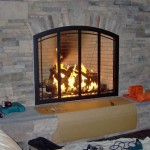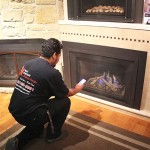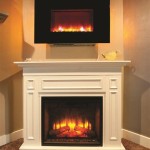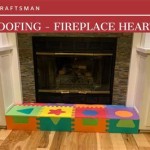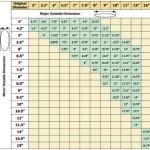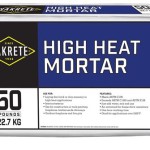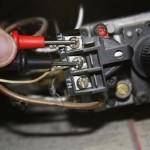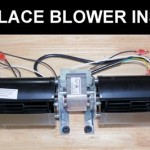Propane Gas Inserts For Fireplaces: A Comprehensive Overview
Fireplaces have long been a central feature in homes, offering warmth, ambiance, and a focal point for gatherings. However, traditional wood-burning fireplaces can be inefficient, requiring significant effort for fuel procurement, storage, and cleanup. Propane gas inserts provide a modern alternative, offering the aesthetic appeal of a fireplace with the convenience and efficiency of gas. This article will explore the various aspects of propane gas inserts, including their benefits, installation considerations, maintenance requirements, and factors affecting cost.
### Understanding Propane Gas InsertsA propane gas insert is a self-contained heating appliance designed to fit directly into an existing fireplace opening. It operates by burning propane gas to generate heat, which is then distributed into the room. Inserts typically feature a realistic-looking log set made of ceramic or other heat-resistant materials, creating the illusion of a traditional wood fire. Unlike open-hearth fireplaces, gas inserts are enclosed, offering greater control over combustion and heat output.
Propane gas inserts come in various sizes, styles, and heat output capacities to accommodate different fireplace dimensions and heating needs. They are typically controlled by a remote or thermostat, allowing for precise temperature regulation and convenient operation. Many models incorporate safety features such as oxygen depletion sensors (ODS) and automatic shut-off mechanisms to prevent gas leaks and ensure safe operation.
The operation of a propane gas insert is relatively straightforward. Propane gas is supplied to the unit via a gas line connected to a propane tank or a natural gas line (with a conversion kit). When the unit is activated, a pilot light ignites the gas, which then flows through the burner system. The burner system distributes the gas evenly across the log set, creating a realistic flame pattern. The heat generated by the burning gas is radiated into the room, providing supplemental heating.
### Advantages of Propane Gas InsertsPropane gas inserts offer several advantages over traditional wood-burning fireplaces and other heating alternatives. These advantages contribute to their growing popularity among homeowners seeking a convenient, efficient, and aesthetically pleasing heating solution.
Efficiency: One of the primary benefits of propane gas inserts is their superior energy efficiency. Wood-burning fireplaces typically convert only 10-20% of the fuel's energy into usable heat, with the majority escaping up the chimney. Propane gas inserts, on the other hand, can achieve efficiencies of 70-85% or higher. This is due to their closed combustion system, which minimizes heat loss and maximizes heat transfer to the room. The increased efficiency translates into lower heating bills and reduced energy consumption.
Convenience: Propane gas inserts offer unparalleled convenience compared to wood-burning fireplaces. There is no need to chop wood, build a fire, or clean up ashes. The units can be ignited with the push of a button using a remote control or thermostat. Many models offer programmable settings, allowing for automatic temperature control and timed operation. This eliminates the constant monitoring and tending required by traditional fireplaces.
Cleanliness: Unlike wood-burning fireplaces, propane gas inserts produce minimal air pollution. They burn cleanly, emitting significantly fewer particulate matter, carbon monoxide, and other harmful pollutants. This contributes to improved indoor air quality and reduces the environmental impact of heating. The absence of wood smoke also eliminates unpleasant odors and reduces the risk of chimney fires.
Aesthetics: Propane gas inserts offer a realistic and visually appealing alternative to traditional fireplaces. Modern inserts feature intricately designed log sets and realistic flame patterns that mimic the look of a natural wood fire. They are available in a variety of styles and finishes to complement any home decor. The ability to control the flame height and intensity adds to the ambiance and allows for customized heating and visual effects.
Safety: Propane gas inserts are designed with safety in mind. They incorporate safety features such as oxygen depletion sensors (ODS), which automatically shut off the gas supply if oxygen levels in the room become too low. Many models also have automatic shut-off mechanisms that prevent gas leaks and ensure safe operation in the event of a malfunction. The enclosed combustion system eliminates the risk of sparks and embers escaping into the room, reducing the risk of fire hazards.
### Installation Considerations for Propane Gas InsertsProper installation is crucial for the safe and efficient operation of a propane gas insert. It is highly recommended to have a qualified professional install the unit to ensure compliance with local codes and regulations. The installation process typically involves several steps, including:
Inspection: Before installing a propane gas insert, a qualified technician will inspect the existing fireplace and chimney to ensure they are in good condition and suitable for the installation. This includes checking the chimney for cracks, obstructions, and proper venting. The technician will also assess the gas supply line to ensure it is properly sized and connected.
Preparation: The fireplace opening may need to be modified to accommodate the gas insert. This may involve removing existing grates, dampers, and other accessories. The fireplace floor should be level and clean. The technician will also ensure that there is adequate clearance around the insert for proper ventilation.
Installation: The propane gas insert is carefully inserted into the fireplace opening and secured in place. The gas line is connected to the unit, and all connections are checked for leaks. The venting system is connected to the insert, ensuring proper airflow and exhaust of combustion gases. The log set is carefully arranged within the insert to create a realistic flame pattern.
Testing: After the installation is complete, the technician will thoroughly test the unit to ensure it is operating correctly. This includes checking the gas pressure, flame height, and heat output. The technician will also verify that all safety features are functioning properly. The homeowner will be provided with instructions on how to operate and maintain the insert.
Venting Requirements: Proper venting is essential for the safe and efficient operation of a propane gas insert. Gas inserts typically require a vent liner to be installed inside the existing chimney. The vent liner is a flexible metal pipe that carries the combustion gases up the chimney and out of the house. The type and size of vent liner required will depend on the specific model of gas insert and local building codes.
Gas Line Connection: Connecting the gas line to the insert requires specialized knowledge and tools. It is crucial to ensure that the gas line is properly sized and connected to prevent gas leaks. A qualified technician will use a gas leak detector to verify that all connections are secure. In some cases, a new gas line may need to be installed from the propane tank or natural gas source to the fireplace.
### Maintenance and TroubleshootingRegular maintenance is essential to ensure the long-term performance and safety of a propane gas insert. Simple maintenance tasks can be performed by the homeowner, while more complex tasks should be handled by a qualified technician.
Cleaning: The log set and glass door of the insert should be cleaned regularly to remove dust and soot. Use a soft cloth and a mild cleaner specifically designed for gas fireplaces. Avoid using abrasive cleaners, as they can damage the log set and glass.
Inspection: Periodically inspect the burner system, vent liner, and gas connections for any signs of damage or corrosion. Look for cracks, leaks, or loose connections. If you notice any problems, contact a qualified technician for repair.
Venting: Have the vent liner inspected and cleaned by a professional chimney sweep at least once a year. This will remove any build-up of soot or debris that could obstruct the airflow and reduce the efficiency of the insert.
Pilot Light: If the pilot light goes out, follow the manufacturer's instructions to relight it. If the pilot light frequently goes out, there may be a problem with the gas supply or the thermocouple. Contact a qualified technician for assistance.
Troubleshooting: Common problems with propane gas inserts include a weak flame, low heat output, and a malfunctioning remote control. Consult the manufacturer's troubleshooting guide for possible solutions. If you are unable to resolve the problem, contact a qualified technician for assistance.
### Cost ConsiderationsThe cost of a propane gas insert can vary depending on several factors, including the size, style, heat output, and features of the unit. Installation costs can also vary depending on the complexity of the installation and local labor rates.
Unit Cost: Propane gas inserts can range in price from several hundred dollars to several thousand dollars. Smaller, less powerful units typically cost less than larger, more powerful units with advanced features.
Installation Cost: Installation costs can range from a few hundred dollars to several thousand dollars, depending on the complexity of the installation. Factors that can affect the installation cost include the condition of the existing fireplace and chimney, the need for a new vent liner, and the need for a new gas line.
Operating Cost: The operating cost of a propane gas insert will depend on the price of propane gas and the amount of usage. Propane gas prices can vary depending on the region and the season. The heat output of the insert and the thermostat settings will also affect the amount of propane gas consumed.
Long-Term Savings: While the initial cost of a propane gas insert may be higher than other heating alternatives, the long-term savings can be significant. The increased energy efficiency of gas inserts can lead to lower heating bills and reduced energy consumption. The convenience and cleanliness of gas inserts can also save time and effort compared to traditional wood-burning fireplaces.
### Key Points SummaryEnergy Efficiency and Cost Savings
Propane gas inserts are significantly more energy-efficient than wood-burning fireplaces, leading to substantial cost savings on heating bills over time. Their closed combustion systems minimize heat loss, maximizing heat transfer into the room.
Convenience and User-Friendliness
Gas inserts offer unparalleled convenience, eliminating the need for wood procurement, fire building, and ash cleanup. Remote control operation, programmable settings, and automatic safety features enhance user experience and simplify operation.
Cleanliness and Environmental Impact
Propane gas inserts burn cleanly, producing minimal air pollution compared to wood-burning fireplaces. This contributes to improved indoor air quality and reduces the environmental impact associated with home heating.

White Mountain Hearth Rushmore Direct Vent Insert With Truflame Tech Fireplaces Usa

Propane Fireplace Inserts Gas Log Sets Tunkhannock Pa Ace Robbins

Bluegrass Living 34 In W 32000 Btu Black Vent Free Dual Burner Gas Fireplace Insert And Remote The Inserts Department At Com

Vent Free Ip 28000 Btu Fireplace Insert Liquid Propane Com

Inserts Gas Kingsman Direct Vent Fireplace Insert Ipi Propane Idv33lpe

Gas Propane Fireplace Inserts

Procom 26 000 Btu Vent Free Dual Fuel Propane And Natural Gas Indoor Fireplace Insert With T Stat Control 170082 The Home Depot

Enviro E Series Gas Or Propane Insert Fireplace Fireplaces By Cameron

Gas Fireplace Inserts Quick Install New Propane Usage

Gas Fireplaces Fireplace Inserts Propane Redwood City Ca

